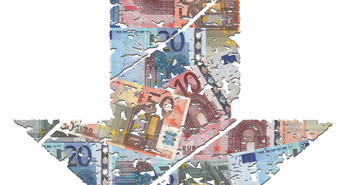Dovish undertones in Federal Reserve Chair Yellen’s first monetary policy speech reverberated through markets and have led the dollar lower against its peers with the dollar index declining 0.25% at time of writing to 79.63. Yellen renewed the Fed’s pledge to maintain an accommodative stance until such time that the central bank is confident that the US economy has been nursed to full health – with particular focus on the labor market and inflation. Although, the current unemployment rate is at 6.7%, the labor market remains weak in their perspective – especially when taking into account individuals who have been forced to accept part time positions as full time work was not available; the proportion of the population that has dropped out of the work force entirely; and the still-sizable ranks of the long term unemployed.   Yellen acknowledged that like its European counterpart, the Federal Reserve continues to assess the threat of low inflation as it persists under its target rate of 2% and will ensure that any tightening of policy will not allow inflation to “overshoot†as it will “be very costly to reverse.â€
A decline in consumer spending due to the recent sales tax raise hike from 5% to 8%, coupled with a slowdown in housing construction has led the Japanese government to downgrade its assessment of the economy for the first time since 2012. This shift comes a week after the Bank of Japan maintained its rosy view that the economy was recovering at a moderate pace and commitment to maintain QE until such time that the inflation target of 2% was attained.
In other news from the Asian session, Beijing has introduced a new set of stimulus measures in response to the ongoing slowdown in economic growth. The State Council, overnight, has set forth measures to bolster the agriculture sector that includes a reduction in the Required Reserve Ratio for qualified commercial banks and an extension of tax benefits to encourage employment for small businesses.
A weaker dollar has lent strength to the euro, with the common currency in the mid 1.3850 figure. Producer price index for Germany dipped more than expected at 0.9% year-on-year, compared to expectations of 0.7%. This confirms that price pressures not only in Europe’s largest economy but the euro-zone as a whole remain subdued.  The lack of tier one data for the euro zone and thin trading ahead of the Easter long weekend should leave EUR/USD to trade in its recent range of 1.37 – 1.39.
Renewed expectations of an early rate hike by the Bank of England has led cable to soar in the overnight session to 1.6840 overnight, levels not seen since 2009. An improving labor market has bolstered the recent rally by the pound and in the short term, the pair of GBP/USD could target 1.7035. Markets will now look ahead to next week’s BOE MPC minutes for further clues.
The Canadian dollar received a boost from March inflation data that beat consensus at 0.6% month-on-month and 1.5% on an annualized basis, following Bank of Canada Poloz’s dovish press conference yesterday where he admitted that the central bank has not closed the door to further interest rate cuts. Support for USD/CAD is seen at 1.0975 while resistance for the pair lie at 1.1040.
South of the border, strong earnings from Goldman Sachs and Morgan Stanley, coupled with jobless claims have led US stock futures to tick higher. Jobless claims came in better than anticipated at 304,000, consolidating the view that the labor market is on the mend. Other data on the docket include Philadelphia Fed Manufacturing Survey for March where it’s expected to improve to 10.
Further reading:
Forex Markets Likely to Goad ECB into Action
Philadelphia Fed Manufacturing Survey



